Отправлено:
15.02.2015 11:52
Всем привет, а как переведенные инфо-посты добавлять, почему-то не могу создавать внутри данного форума новые темы.</quote>
Я тоже сначала растерялся, но добавлять можно, только не из общей ветки, а прям отсюда
 Наверху страницы над комментариями есть кнопка "Новая тема" - она создает тему в общем разделе. Таким образом я добавил свой последний перевод 22 дня сюда.
Наверху страницы над комментариями есть кнопка "Новая тема" - она создает тему в общем разделе. Таким образом я добавил свой последний перевод 22 дня сюда.
В теме: Инфо-посты на переводе
Отправлено:
14.02.2015 01:46
22 день перевел. Когда на сайт вернутся блудные инфо-посты из осеннего запуска - я продолжу перевод 

В теме: Инфо-посты на переводе
Отправлено:
14.02.2015 01:40

!!! TODAY WE ADD ONE MORE CIRCUIT TO OUR TRAINING !!!
Another 7 days of our program are left behind and, by tradition, a short review of the info-post for these days:
Day 15. Proper breathing
Day 16. Learning of pull-ups from scratch
Day 17. Calluses from pull-up bar
Day 18. Injuries
Day 19. Sickness
Day 20. How to resume trainings after a layoff
Day 21. 10 000 hours
Now let's get back to today's topic!
Today we are going to talk about two basic principles, without which it’s almost impossible to succeed. These two principles are Quality and Persistence. Let’s consider each of them in detail

Quality

Be always focused on performance quality, not on quantity! As the proverb says "Don't count the rep, make every rep count!"
When you’re doing an exercise, you have to focus on the process. There’s no need to think about how many reps or how many circuits are left. Moreover you don’t have to think what you’ll do after workout and what else should be done today. When you train – you train! Consider this as a process of meditation and give it a due attention! This approach will not only increase the efficiency and reduce the risk of being injured, but it will also bring you a peace of mind, because you’ll be able to use your trainings as a way to leave the problems and duties of the contemporary world for some time, and dive into your own world of self-perfection, where you’re getting better every day.
It would be great to record video of you performing the exercises, as it may give you a view from a different angle and let you objectively estimate your technique and mistakes you've been doing. Sometimes we are totally unaware about them until someone points out!
Don’t get upset, if your technique isn’t perfect or there are some gaps in it in the beginning (well, for example, your pelvis is weighed down during the push-ups). If you’re just starting your trainings, these kinds of shortcomings can happen simply due to the muscles, which are not accustomed to this exercise. On the other hand, if you’re not a beginner, the shortcomings can be caused by doing of the exercise with the wrong technique for a long time, and getting you accustomed to do it that way.
There is, still, a huge difference between understanding what you are doing and simply repeating, but we will talk about this subject in the upcoming info-posts. Now we shall proceed to the second important principle.
Persistence

I don’t want to upset anyone, but only a regular training can help you to achieve something. To illustrate this idea, let’s imagine that your desirable result is a brick house. It is unlikely that you would be able to build a whole house from the ground in one day, but if you still try, you’re much more likely to rupture yourself rather than succeed in it. But if you’ll be working on the construction of your house day by day, brick by brick, then, over the time, you will build it. Your training sessions are those bricks that you use to get the desirable results, therefore, if you won’t train regularly, the house won’t build itself, and there will be no result.
Besides, it’s impossible to understand a lot of the technique nuances deeply, if the exercises are not done regularly! Conversely, the more you train, the better you know your body, know how it works and you can gradually correct the shortcomings in technique by focusing on a particular moments, you’ll learn to feel and involve certain groups of muscles, which you didn’t notice before. Sooner or later (depending on your zeal
 you will succeeded and get the result that you dreamed of. And it will happen just because you gradually, step by step, made it towards your aim and getting obstacles out of your way.
you will succeeded and get the result that you dreamed of. And it will happen just because you gradually, step by step, made it towards your aim and getting obstacles out of your way.A few words in the conclusion
There are moments, when it’s difficult to concentrate on exercise performance and this simply means that it is not the best time to train. There are days, when you absolutely don’t have time to train, but it only means that you’ll lay another brick tomorrow. In the long term these small breaks doesn’t matter. Sahara Desert doesn’t become less of Sahara Desert even if it’s raining sometimes. Because all other time it’s not raining! So, if you train regularly and keep an eye on a performance quality of your exercises, it’ll be all right and your goals will be reached!
<url="http://workout.su/100DW">100 Days WorkOut - Contents</url>
В теме: Day 22. Two principles
Отправлено:
13.02.2015 21:33
Олег, брать отсюда:
<url="http://workout.su/articles/540">ссылка</url>
Update: извиняюсь, тут только оглавление, по ссылкам ошибки
Update 2: интересный момент, если я залогинился на сайте, то при попытке перехода к любому дню осенней 100-дневки я получаю ошибку:
Если я пользуюсь гостевым доступам и не вхожу под своим аккаунтом, то доступ к статьям открыт.
Судя по ошибке мне кажется тут может быть "access violation".
<url="http://workout.su/articles/540">ссылка</url>
Update: извиняюсь, тут только оглавление, по ссылкам ошибки

Update 2: интересный момент, если я залогинился на сайте, то при попытке перехода к любому дню осенней 100-дневки я получаю ошибку:
CDbCommand не удалось исполнить SQL-запрос: SQLSTATE[42000]: Syntax error or access violation: 1064 You have an error in your SQL syntax; check the manual that corresponds to your MySQL server version for the right syntax to use near 'AND theme_id=0' at line 1</quote>
Если я пользуюсь гостевым доступам и не вхожу под своим аккаунтом, то доступ к статьям открыт.
Судя по ошибке мне кажется тут может быть "access violation".
В общем, если не заходить на сайт под своим аккаунтом, то по ссылке выше доступны все посты осенней 100-дневки!
В теме: Инфо-посты на переводе
Отправлено:
13.02.2015 19:38

I think, today is a good day to tell you about a subject that may be not so pleasant, but quite important, as all people involved in fitness or sports face this problem from time to time. I’m talking about injuries.
Let’s start from the most important thing – absolutely (!) everyone gets injured. Injuries are the constant companion of strength training (and, indeed, any kind of it). It’s no matter how long you have been training, what your current level is and how attentive and responsible your training approach is (although, this reduces the risk of being injured), anyway you may receive the injury. You just have to accept it.
The number 1 rule

We never do something that causes pain. NEVER. You shouldn’t endure pain, you don’t need to do something through pain. If something is beginning to pain, you have to stop doing this IMMEDIATELY.</quote>
There are a lot of reasons, why it is not good to train through pain, but personally for me most tangible was the following. Your body doesn’t like, when any of its parts suffer from pain, so if you’ll force it to do exercises that causes pain, it will try to do them in such manner that helps to reduce pain. This means that pain will directly influence your exercises technique, because your body will be trying to change it. Do you know what such subconscious changes of the technique are leading to? To increasing of the risk of getting the additional injures!
If you don’t want to get a serious problems – don’t do anything through pain! I must mention that I’m talking about the ‘bad’ pain (when you have pain in your ligaments/joints, or somewhere else, where you shouldn’t have pain) and not about the ‘good’ pain (when you have pain in your muscles). Although, in the second case, you also need to learn to understand your body and see wherether you can train or not.
After you stopped doing what causes pain, you should analyze your feelings and find the source of this pain, to understand why it appeared and what to do with it. It’s all very simple.
Injuries: big and small ones

There are different kinds of injuries and the most important thing to do when you get one is to understand, how serious is your injure. If the problem is not very serious (e.g. sprain), recovery may take a few days or a week, if it’s something more serious (e.g. dislocation), recovery may take a few weeks, and the more serious is the injury, the more time will take the recovery.
Anyway, there are several main rules that allow you to recover a bit quicker after an injury:
* Provide enough rest. Do not load the injured part of your body without need.
* Use anesthetic gels. Actually, injuries in WorkOut is a comparatively rare thing, but as for the most common, those, surely, are sprain and inflammation. Anesthetic gels contain the active component, which helps to remove inflammation. This may not only reduce pain, but sometimes remove its reason. Anyway, it’s very helpful thing, use it, it will do you good.
* Use wraps. There is such a good thing as wraps. There are wrist, elbow, shoulder, knee wraps etc. Those are destined for giving an additional fixation to a joint, by limiting its mobility and reducing the load on a joint itself as well as on muscles/ligaments surrounding it. Wraps may be useful if you really want to train very much (or it’s strongly needed).
The Attitude
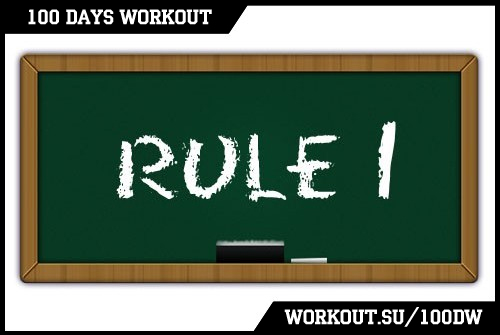
Nobody likes getting injured, but if you can’t avoid them, so it all depends on your attitude towards them. I know that such situation can unsettle you, that you don’t want to leave the track and take a break and so on. But...
Firstly, depending on injury, you can modify your workout routine, so that you can keep training without loading your injured body parts. For example, if you sprain you wrist, you may dedicate a few next trainings to the lower body training. If you slipped, fell and knocked your knee, okay, train upper body in the near future. This list can be much longer, as all variants are limited only by your imagination. But the main idea is – let injured parts get enough time to recover!
Secondly, working out is only a part of our life, surely cool and important, but only a part. There is an infinite number of interesting things in the world, which you can do, while you can’t train. Recovery time can be used to do such things that you don’t have time to do due to your very busy schedule (because when you are ill or injured, usually you have a lot of free time). You can master some useful computer program, read an interesting book, learn to play on some musical instrument, think of something, introspect about your past and make plans for the future! There is always a lot of variants, and the only thing you need is to stop thinking that you can’t train now, and start thinking about what you can do now!
<url="http://workout.su/100DW">100 Days WorkOut - Contents</url>
В теме: Day 18. Injuries
Отправлено:
13.02.2015 19:37
День 18, Krio</quote>
 Но там он, видимо, и затерялся... А сейчас доступа туда уже нет.
Но там он, видимо, и затерялся... А сейчас доступа туда уже нет.Добавлю еще раз.
В теме: Инфо-посты на переводе
Отправлено:
11.02.2015 15:13

I think, today is a good day to tell you about a subject that is not most pleasant, but quite important, as all people involved in fitness or sports somehow face this problem. I’m talking about injuries and illnesses.
Let’s start from the most important thing – absolutely (!) everyone gets injured. Injuries are the constant companion of strength training (and, indeed, any kind of it). It’s no matter how long you have been training, what your current level is and how attentive and responsible your training approach is (although, this reduces the risk of being injured), anyway you may receive the injury. You just have to accept it.
The number one rule
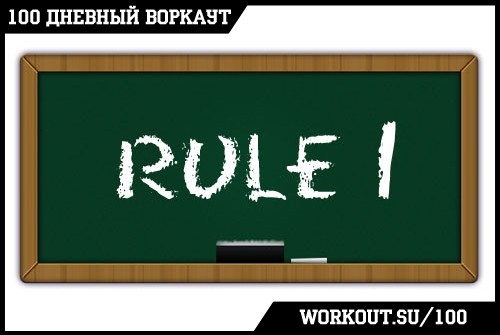
We never do something that causes pain. NEVER. You shouldn’t endure pain, you don’t need to do something through pain. If something is beginning to pain, you have to stop doing this IMMEDIATELY.</quote>
If you don’t want to get a serious problems – don’t do anything through pain! I must mention that I’m talking about the ‘bad’ pain (when you have pain in your ligaments/joints, or somewhere else, where you shouldn’t have pain) and not about the ‘good’ pain (when you have pain in your muscles). Although, in the second case, it’s also needed to learn to listen to your organism and understand, whether you can train or not.
After you stopped doing what causes pain, you should analyze your feelings and find the source of this pain, to understand why it appeared and what to do with it. It’s all very simple.
Injuries: big and small ones
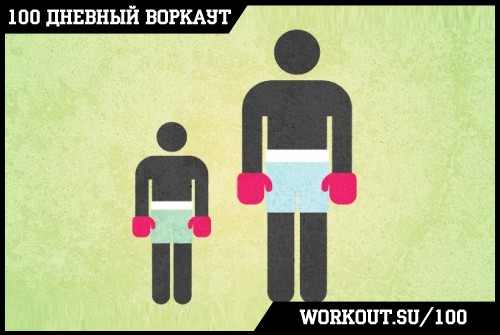
There are different kinds of injuries and the most important thing to do is to understand, how serious is your injure. If the problem is not very serious (e.g. sprain), so recovery may take a few days or a week, if it’s something more
serious (e.g. dislocation), so recovery may take a few week, the more serious is the injury, the more time will take the recovery.
Anyway, there are several more rules that allow you to recover after an injury a bit quicker:
* Provide rest and quiet. Do not unnecessarily load the injured part of your body. The quieter, the better.
* Use anesthetic gels. Actually, injuries in workout is a comparatively rare thing, but as for the most common, those, surely, are sprain and inflammation. Anesthetic gels contain the active component, which helps to remove inflammation. This may not only reduce pain, but sometimes remove its reason. Anyway, it’s very helpful thing, use it, it will do you good.
* Use wraps. There are such things as wraps. There are wrist, elbow, shoulder, knee wraps etc. Those are destined for giving an additional fixation to a joint, by limiting its mobility and reducing the load on a joint itself as well as on muscles/ligaments surrounding it. Wraps may be useful if you really want to train very much (or it’s strongly needed).
The proper attitude
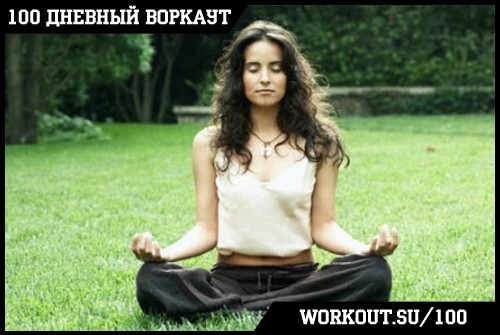
Nobody likes getting injures, but if you can’t avoid them, so, in the end, it all depends on your attitude to them. I know that such situation can unsettle you, that you don’t want to leave the track and take a break.
First, depending on injury, you can modify your workout routine, so that you can keep training without loading of your injured body parts. For example, if you sprain you wrist, well, you may dedicate a few next trainings to the lower half of your body. Well, imagine that you slipped (taking into account the quality of snow removal here, it’s no wonder), fell and knocked your knee, okay, train upper half of your body in the near future. This list can be much longer, as all variants are limited only by your imagination. But the main idea is – let injured parts to recover.
Second, trainings and workout are only a piece of our life, surely cool and important, but only a piece. There are an infinite number of interesting things in the world, which you can do, while you can’t train. Recovery can be used to do such things that you don’t have time to do due to the very busy schedule (because when you are ill, usually there is a lot of free time). You can master some useful computer program, read an interesting book, learn to play on some musical instrument, think of something, introspect about your past and make plans for the future! There are always a lot of variants, and the only thing you need is to stop thinking that you can’t train now, and start thinking about what you can do now!
100-day workout – Contents
В теме: Day 18. Injuries
Отправлено:
05.02.2015 01:45

When you regularly train on pull-up bars you will eventually get calluses on your hands. Sooner or later, but this just can’t be avoided. Unfortunately, not everybody knows that calluses should be treated carefully. That’s why they can bring some real troubles. Our goal is to give you the maximum of useful information, therefore today I’m going to speak how to get away from problems calluses or even how to get rid of them at all.
4 ways to fight calluses
1) The Grip. For gripping it’s better to use fingers instead of a palm. It’s just because rubbing of hand palms is the main cause of the calluses. No doubt this method demands more physical strength from the wrists, forearms and particularly fingers and it will be quite hard in the beginning, but it all will be well paid off in the end. Here is a picture for illustrative purposes:

2) Bar thickness. From school course of physics (yes, yes, this was a cool subject, wasn't it?) you might remember that pressure force is inversely proportional to the size of an area under the pressure. Thus, by increasing the area of contact of your hand and a bar, you will decrease the weight of the load on skin and reduce possibility of getting calluses.

This can be achieved in two ways (it's up to you to choose one)
- Find a thick bar and do the pull-ups on it
- Increase the thickness of a standard pull-up bar by using the special grips or plain towel (wrap it around a bar)
3) Gloves. Use the gloves that suit your training. In this aspect two variants may be highlighted:
* when hand rotates around the bar (e.g. during muscle ups),
* when bar is in a fixed position in your hand (e.g. during pull-ups or static exercises)

In first case you need gloves with a soft protection pad near the fingers and on the palm, because this pads protect your hands from getting the calluses. Also, your gloves shouldn’t have a high friction coefficient as we had already written about the consequences of friction force!
In second case you just need gloves that provide a good cohesion with bar, because this way you will reduce the load on your skin. As a radical alternative variant you can use special GRIPAD grips, which tightly fix your hand on a bar and have a few centimeters of protection surface that doesn’t allow calluses to appear.

4) Hand cream. Use lotion or cream (anyone is fine) to make your palms soft, as the dry skin more often chaps, cracks, tears and distracts you from training.
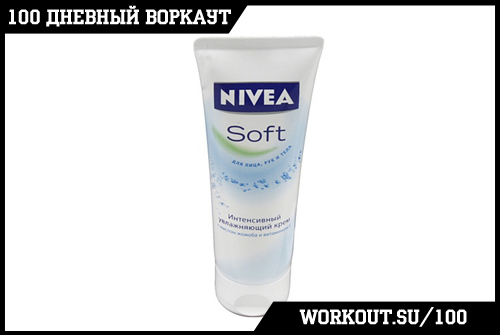
(Nivea cream is simply the first photo that came to my mind)
Well, that’s it. The main thought that I want you to understand is that although you can’t avoid getting the calluses, it doesn’t mean that you should suffer from them

<url="http://workout.su/100DW">100 Days WorkOut - Contents</url>
Отправлено:
04.02.2015 08:29
Беру 17-18 на перевод, чтобы заткнуть дыру до 20 

В теме: Инфо-посты на переводе
Отправлено:
04.02.2015 08:22
Олег, 7 пост у вас был отмечен нулевым значением, а значит был взят и я думал, что именно мной, т.к. его мне выдал на перевод Антон в личном сообщении. Странно, что он не вспомнил про меня, видимо, закопался в делах и запамятовал 
Приношу свои извинения человеку, который тоже переводил 7 день
Впредь буду отмечаться в специальной теме, чтобы такой казус не повторился.

От кого: WasD
Когда: 02-Февраля-2015 10:13
Отлично! Гляну сегодня, бери тогда седьмой день </quote>
</quote>
Когда: 02-Февраля-2015 10:13
Отлично! Гляну сегодня, бери тогда седьмой день
 </quote>
</quote>Приношу свои извинения человеку, который тоже переводил 7 день

Впредь буду отмечаться в специальной теме, чтобы такой казус не повторился.
Отправлено:
04.02.2015 01:23

*** During the current launch of 100-day workout we are continuing to modify our educational program, and since now each last day of the week you will dedicate to stretching. Why you need to do that, and why stretching and flexibility are so important for your health – those questions will be answered in today’s info-post
We DON’T do the circuits today!!!
***Appropriate and various physical activity allows solving a lot of problems with your support-motor apparatus. But the muscle strength is only the one side of the question. The other side is the work on the flexibility of your joints.
You may think the flexibility is quite simple thing as even children are flexible to some degree, or rather not simply flexible, but that flexible, so adults may only dream of such ability. From the other hand – this is very complicated and complex indicator of our muscles and joints condition and it’s very difficult to give an objective criteria of how flexible a person is. Moderate flexibility in all joints or some “gift”, for instance in “split”, what should be the measure of flexibility? Centimeters? Degrees?
In a naive way, what is a joint? (hope to be forgiven by doctors for the freedom in words that are used here and below). A joint is a movable connection of 2 or more bones, which are set in motion by the muscles attached to them. Bones in a joint can move in a single plane (e.g. like elbow joint) and are set in motion by a couple of opposing muscles – biceps and triceps. Bones can also move in several planes and can be set in motion by whole muscle groups, e.g. shoulder joint, where the pectorals, deltoids, trapezius, rotator cuff muscles etc. are responsible for rotation. However, our joints are deforming with age, affected by long-standing factors.</quote>
Our muscles are capable of stretching to a very large degree (they can extend approximately by 60%). But our nervous system doesn’t allow us to do that, as if to say at certain point – ‘Do not relax any further! Be careful! You may get injured!’. Stretching implies training of your nervous system in terms of transmission of nerve impulses, or rather blocking of nerve impulses, which are responsible for the contracting of target muscles and due to that your muscles can relax (and extend) more and more. So, strength training learns our muscles to contract efficiently, while stretching learns our muscles to relax efficiently.
Combining of these two components in your training is a key to a healthy body.
Benefits of stretching
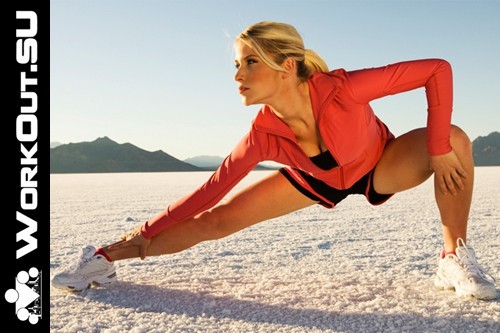
[1] Improvement of joint movement amplitude
In fact, many people can’t squat deep enough (so that hips are being lower the parallel to the ground and heels don’t lose contact with the floor) due to the ankle and hip joint that are not flexible enough. Reduced amplitude of the exercise, in turn, affects the efficiency.
[2] Improvement of athletic indicators
In general, with improvement of flexibility, athletic indicators are also improved, though stretching done with a poor technique or at the wrong time may reduce results due to the relaxing effect.
[3] Increasing of the physical condition level
At a certain very high level, sportsmen are often forced to sacrifice some physical quality to develop another one to a maximum. However, at the beginning stage we have exactly the opposite situation – by developing one physical quality you also assisting in development of other ones. In our case, the work on flexibility will improve your strength indicators due to CNS (central nervous system) training, which will send more precise signals to your muscles, which means the more effective use of their potential.
[4] Reducing of stress and tension
Here is a simple example. Sedentary life-style may result in following changes. Constantly contracted (but not tensed) hamstring (muscle of the rear surface of the thigh) is getting shorter with time. Meanwhile, lower back muscles, on the contrary, relax and are getting flabby. This is one of the reasons that are led to pain in a waist during the physical load, because it becomes too excessive. Solution of the problem, in this case, is hamstring stretching and strengthening the muscles of the core (e.g. by doing a different kinds of plank exercises).
Stretching doesn’t mean stretching of muscles as such, but their controlled relaxation.
[5] Posture alignment
Constant sitting opposite a display and working with a keyboard and mouse keep our shoulder joint in such position, where muscles rotating a shoulder inside and forward are always contracted and tensed, while muscles rotating a shoulder backwards are stretched. If somebody stays in such position at work during the years and do no physical exercises that force a shoulder joint to work in a backward direction, so he get the very slouch, which are caused due to the unbalanced work of adductor and abductor shoulder muscles. If we look at this issue from the side of flexibility, so this means that we’ve lost flexibility in our shoulders and changed the balance between the opposite muscles. In this case a solution is chest muscles stretching and horizontal pull exercises (e.g. Australian pull-ups). Work on stretching of shoulder joints and you will rejuvenate by several years.
[6] Reducing risk of injury
Since stretching can release the muscles overstrain, there will be less chronic fatigue accumulating inside of them and that will extend the period of training without injuries.
* Stretching allows to accelerate blood circulation, which improves muscular elasticity and gives you more stamina and strength.
[7] Accelerating of recovery process after workout
Delayed onset muscle soreness is a development of micro trauma in muscles and accumulation of metabolic toxins after training inside of them. Stretching allows to relax the muscles, which means improvement of blood circulation and faster excretion of these toxins from the muscles.
[8] Improvement of quality of life
Here all is very simple – it’s cool to be able to tie the laces, while standing, when you are 10, 40 or 80 years old. And if you remember how elderly people suffer from their flexibility problems, I hope you agree with me that stretching is serious!
Stretching exercises set videos
Here are a few videos about stretching that I like:
Stretching exercises set by Sergey Badyuk:
Stretching exercises set by Jamal Azhigirey:
Dynamic stretching by Kane Sumbat (wow, he is in his fifth decade!):
And a huge set of stretching exercises by Dmitriy Smirnov, Men's Health fitness editor - <url="http://www.mhealth.ru/form/fitness/357533/">link</url>.
I hope this post has provided you with all information needed

100-day workout – Contents
Отправлено:
02.02.2015 21:25
Англоязычные участники уже к нам присоединились и потихоньку начинают помогать </quote>
 Будет у кого поспрашать, ежели что
Будет у кого поспрашать, ежели что 
В теме: Day 4. Squats
© 2010-2020 Street Workout
Использование материалов www.workout.su разрешено
только при наличии активной ссылки на источник.
info@workout.su +7 905 528 1515 (Антон)
Перейти на полную версию сайта